Increasing Privacy in your Garden with Planting
 Lee Burkhill: Award Winning Designer & BBC 1's Garden Rescue Presenters Official Blog
Lee Burkhill: Award Winning Designer & BBC 1's Garden Rescue Presenters Official Blog

It's easy to think that increasing your hedge height, fences or trellis will bring peace and increase privacy in your garden. However, with the maximum fence height set at 2m in England. You're only able to achieve so much with this method. I'm going to show you with a recent example of how you can use softer planting mixes with the aim of increasing privacy in the garden without turning your garden into a sunken box!
A garden design client in Manchester got in touch as they were totally at a loss as to how to block out the appearance of a grey new build three-story house. They were thinking about some mature trees and fence panels. Luckily they got in touch before they did!

So first things first, you need to really scrutinise your garden. Finding the hotspots of where you feel the most overlooked, where you want to sit or relax in the garden. I find that ideally, you need to sketch up the layout of your current garden. Making this as accurate as possible. This is where a garden designer can really be worth their fee. However, a scaled sketch of the garden is a good place to start this is essential to start to increase privacy in the garden.
Make notes of all the windows, viewpoints and awkward overlooked areas. These are going to be the hot spots that we are going to address. You will also need to rank these. Which of these are the most annoying? Where will you spend most of your time? That way you can focus your efforts.
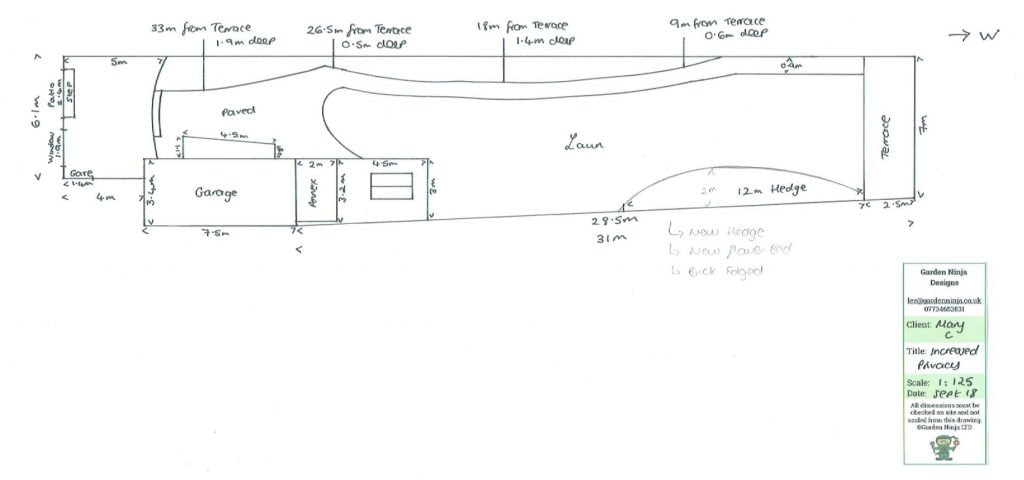
Adding height via planting is a really good idea to help reduce views and give a feeling of privacy. You don't need to go out and buy a 30 meter heigh Conifer either. The subtlety of using a few specimens that add height will be enough. If you go down the route of blocking out all of those views, chances are you'll be blocking out light as well! Increasing privacy in the garden can be achieved relatively easily with the right height in your planting plans.
In this example, I've used Acer platanoides 'Globosum' in a three-quarter standard. They add height without bulk and become a feature and focal point in the garden. Taking your immediate attention away from the views of that big grey house and into the garden.
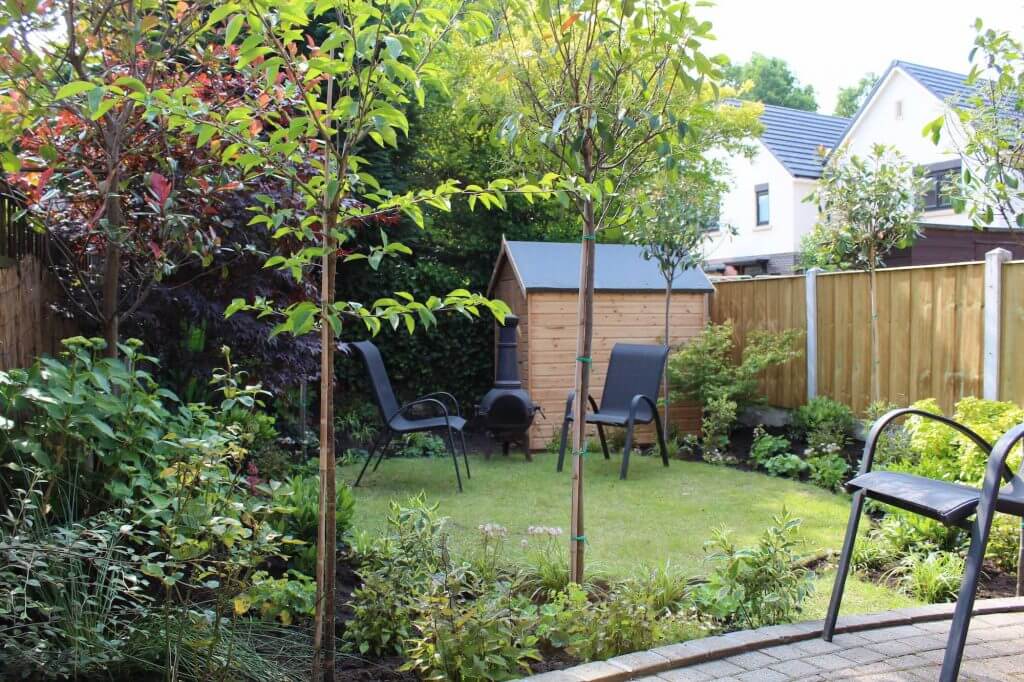
Using the rule of 1,3 and 5 make sure that you don't end up with just two trees at either end of the border. Unless really carefully planned this way in a formal garden they can look odd. Always try and plant in an odd number, you may think that's strange but trust me it works!
If there's one mistake I see time and time again in the garden planting its pick and mix plants. Now I know you may be really excited to have one of every possible species of plant in your garden. However, you'll never really manage to get the garden to flow with this method. When looking to increase privacy the layout and repetition in your planting is key.
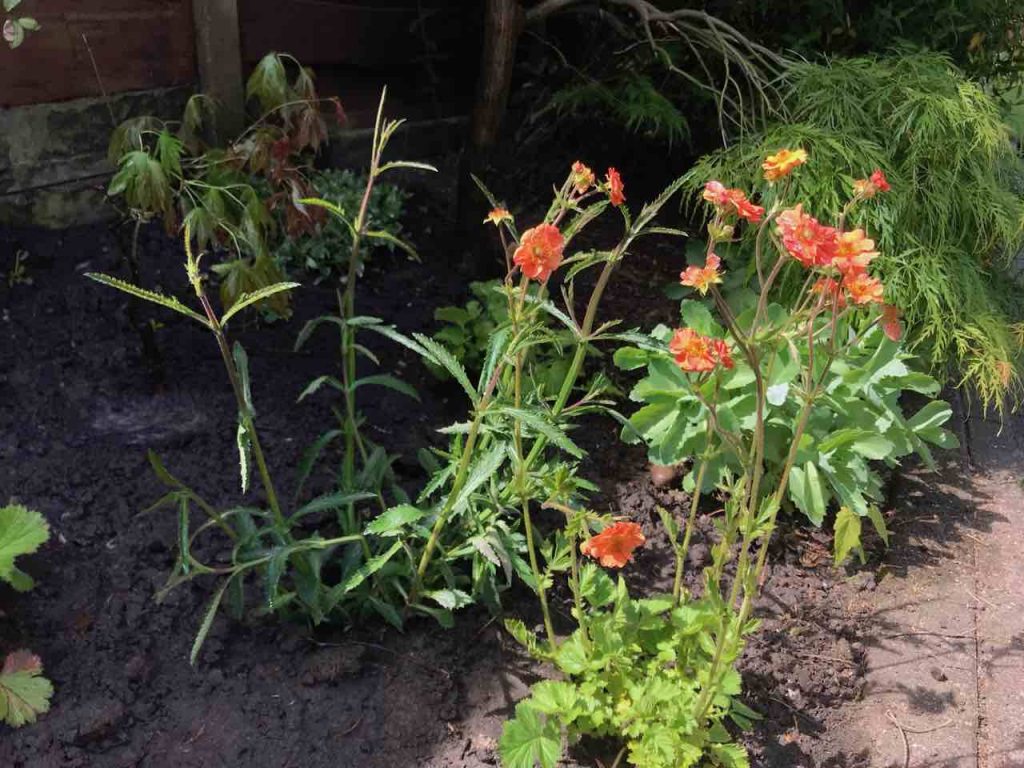
By using repetition you are linking each area of the garden to the next. This helps slow down a visitors gaze as it follows the patterns and linked plants in sequence. If you have a whole mix of different plants all over the show its a bit like looking at a shoe rack full of odd single shoes. It has the opposite effect of feeling frantic and disjointed. You just want to look somewhere else!

In this example, I've used repetition in both the planting species and colours along with the shape of the specimen trees. The client really liked curves and spheres so the planting scheme reflects this.

Other ideas for repetition would be:

You can also increase the feeling of privacy and a feeling of space using vertical gardening. Now you don't need to install a really fancy living wall and irrigation system you can start with some climbing plants. I use wire with screw in hooks to give an almost invisible structure for the climbers to grow up. However, you can use trellis from the garden centre or slatted frames if you wish.
In this example, I have used Trachelospermum jasminoides (an Evergreen) to cover some of the fence panels and bring your view down from the fence line and into the borders.
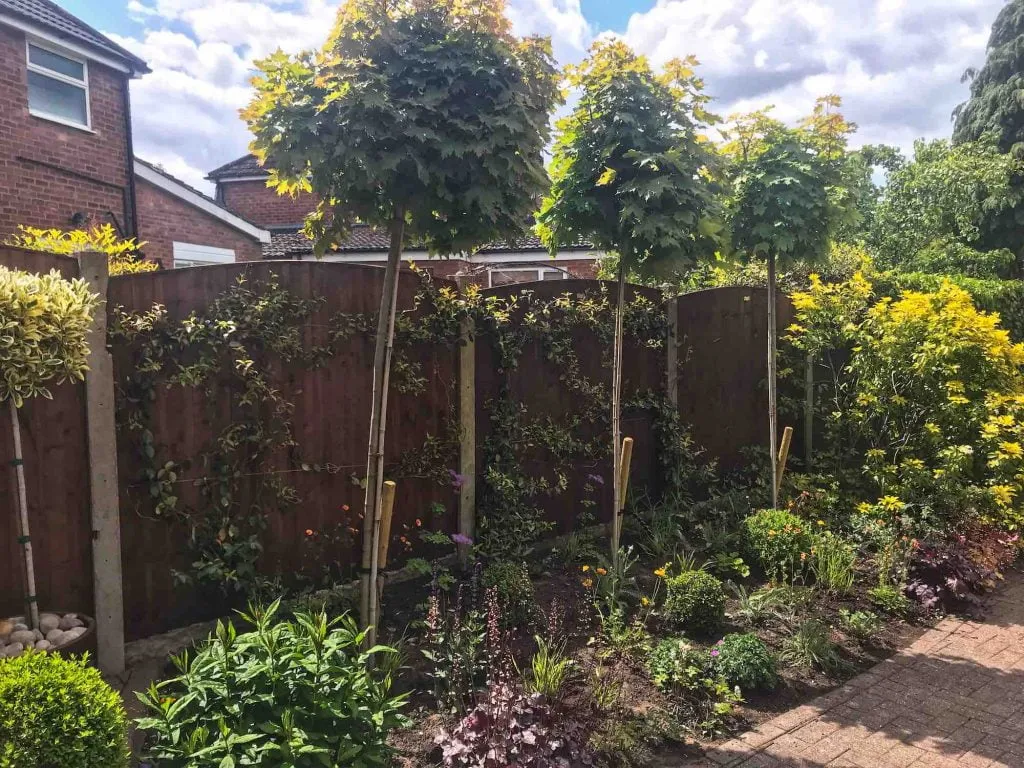
Here's a few top tips for selecting plants for a small garden to add interest and draw your eye into the garden.
Another top tip building from repetition is to choose different varieties of the same plant species. Now you may ask why you would need to do this. You may even be confused as to what this means. Think of the Species as the type of wine and the variety is the grape or blend or region. The variety is a specific 'form' of that plant.
Plant species will have a number of varieties and then cultivars to choose from. You've got a whole array of options in these varieties which you can use to your advantage. So if you have a smaller garden lookout for varieties that may be smaller than their parent plants or have a dwarf aspect. If you've got big sprawling borders you want to largest varieties. This way you're being clever in getting a similar look from your plants without taking up the entire border or plants looking tiny and lost.

A good example of this is Verbena. The most popular form is Verbena bonariensis. It's a beautiful airy tall purple specimen. Gorgeous. However, it can become too large for a smaller border. By researching other Verbena varieties you could use 'Lollipop' which has the same look but on a much smaller scale. In the garden above I've used both. The larger bonariensis at the back of the border for height and 'Lollipop' near the front to carry on that repetition.
Another tip that will turn you into a planting wizard is paying attention to the ultimate growth of density of each plant. If you plant say Salvias at the very front of the border they will grow to become really dense bold plants. The drawback is that they then over shadow any other plants behind them. So pay careful attention to the density, form and ultimate growth shape of the plants.
As a very rough rule of thumb. You're wanting larger plants in the middle to the back and shorter airy plants at the front. Obviously, there are exceptions but 9 times out of 10 this is a good rule to follow. Don't worry though, if your plant suddenly blocks out all others you can always move them!
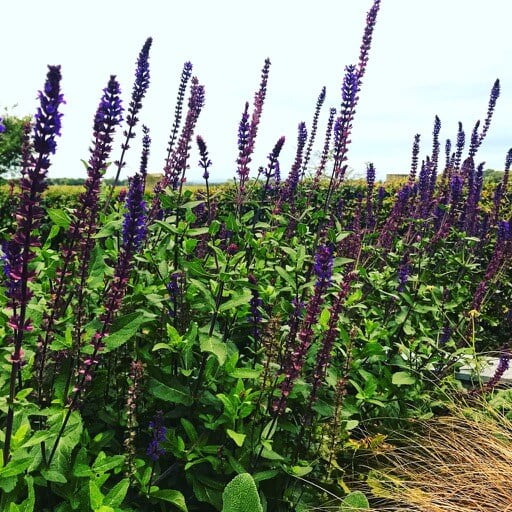
We've already spoken about Pick and Mix planting and how awkward it can look in a garden. When choosing your plant species and varieties ensure that you're buying multiples of 3 or 5. Only buy one plant if it is going to be a specimen ie a focal point. Adding one Geranium into a border full of other grouped plants will draw attention to it and it risks looking odd. The same with that unknown shrub your neighbours just given you. Girl, put it somewhere else!
There's going to be many challenges for today's urban gardener when it comes to privacy. Hopefully, this guide shows you that sometimes a more subtle approach actually brings a better result. I mean if you really want lots of orange 2-meter high fence panels then that's fine. You may need to completely redesign your garden. But ask yourself before you start ripping up your garden, is this really going to bring me a sense of privacy or peace when I'm done? Have I considered the views I need to screen and the light levels? Sometimes simply reworking your planting and careful positioning of specimen trees is enough to create your idyllic haven!


Why not Tweet, Facebook or Instagram me with your garden drama. If you're struggling for a garden solution why not get in touch? You can also check out the other guides and vlogs on my Youtube channel.



You must be logged in to post a comment.

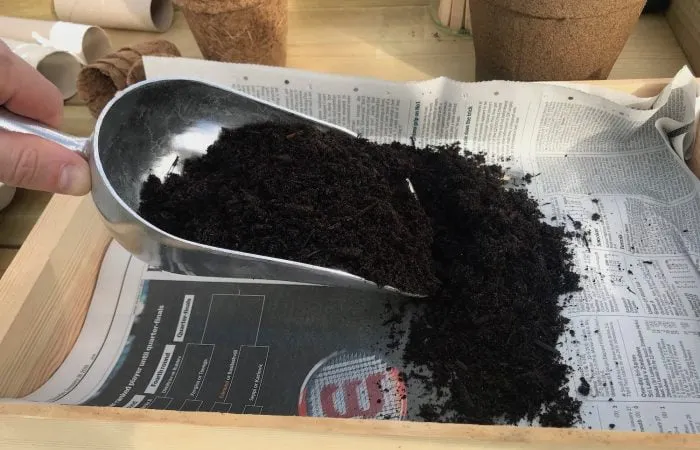




JOIN THE NINJAS

Be the first in line for new Guides, Discount codes and Offers
Hi there Lee,
Please would you kindly tell me where you purchased the Acer Platanoides Globosum Norway Maple that you planted in the beautiful garden design you did for your client in Bury.
Kind Regards
Carole Worsley.
Hi Carole
I think I ordered them through Grasslands who are based in Manchester. You should be able to get them from any decent nursery or tree nursery. Hope that helps. Lee